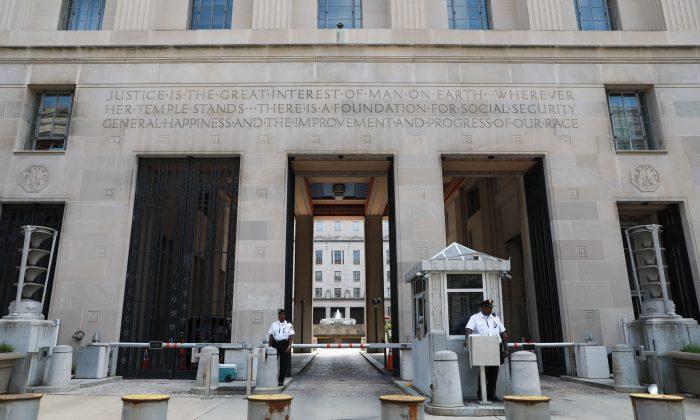A former intelligence analyst with the National Security Agency (NSA) was charged in March with leaking classified documents to the media.
Daniel Hale, 31, of Nashville, Tennessee, faces five counts related to obtaining, retaining, transmitting, and disclosing the classified documents, as well as stealing some unclassified ones. Each charge carries a penalty of up to 10 years in prison, the Justice Department said in a
May 9 release.
Hale started talking to a reporter in April 2013 during his time in the Air Force, while he was working for the NSA as an analyst “responsible for identifying, tracking, and targeting threat networks and targets,”
according to the indictment unsealed May 9. After leaving the Air Force, he joined Leidos, a Virginia-based defense contractor, to work as a political geography analyst assigned to the National Geospatial-Intelligence Agency, maintaining his top secret clearance retained from his NSA work.
Between February and May 2014, Hale printed 23 documents unrelated to his work, 11 of which were classified, and provided at least 17 of them to either the reporter or the online media outlet he worked for, the indictment alleges.
Many of the classified documents were PowerPoint presentations on the U.S. military campaign against al-Qaeda and counterterrorism operations. Others contained information on specific military targets, including an intelligence report on an al-Qaeda operative.
The reporter isn’t identified in the article, but the details point to Jeremy Scahill, a founding editor of The Intercept.
On Oct. 15, 2015, The Intercept ran Scahill’s article “
The Assassination Complex,” partly based on a “cache of secret slides that provides a window into the inner workings of the U.S. military’s kill/capture operations at a key time in the evolution of the drone wars—between 2011 and 2013,” he wrote.
“The documents, which also outline the internal views of special operations forces on the shortcomings and flaws of the drone program, were provided by a source within the intelligence community who worked on the types of operations and programs described in the slides.”
Based on the indictment, Hale looked up Scahill in 2013 and went to meet him during a promotion event for Scahill’s 2013 book “Dirty Wars.” The two remained in contact.
“[Scahill] wants me to tell my story about working with drones,” Hale wrote in a May 2013 text message to a friend.
The Intercept’s editor-in-chief, Betsy Reed,
published a statement on May 9, saying the publication “does not comment on matters relating to the identity of anonymous sources.”
She said the documents described in the Hale indictment “detailed a secret, unaccountable process for targeting and killing people around the world, including U.S. citizens, through drone strikes” and are of “vital public importance.”
The indictment represents another sign of the Trump administration’s resolve to go after leakers. Attorney General William Barr
testified on May 1 that the Justice Department has “multiple” investigations underway into leaks of classified information to the media.
One criminal leak probe that targeted former top FBI lawyer
James Baker was revealed by Republican lawmakers
in January. The investigation was still active as of Oct. 3, 2018, when he was interviewed by Congress.





